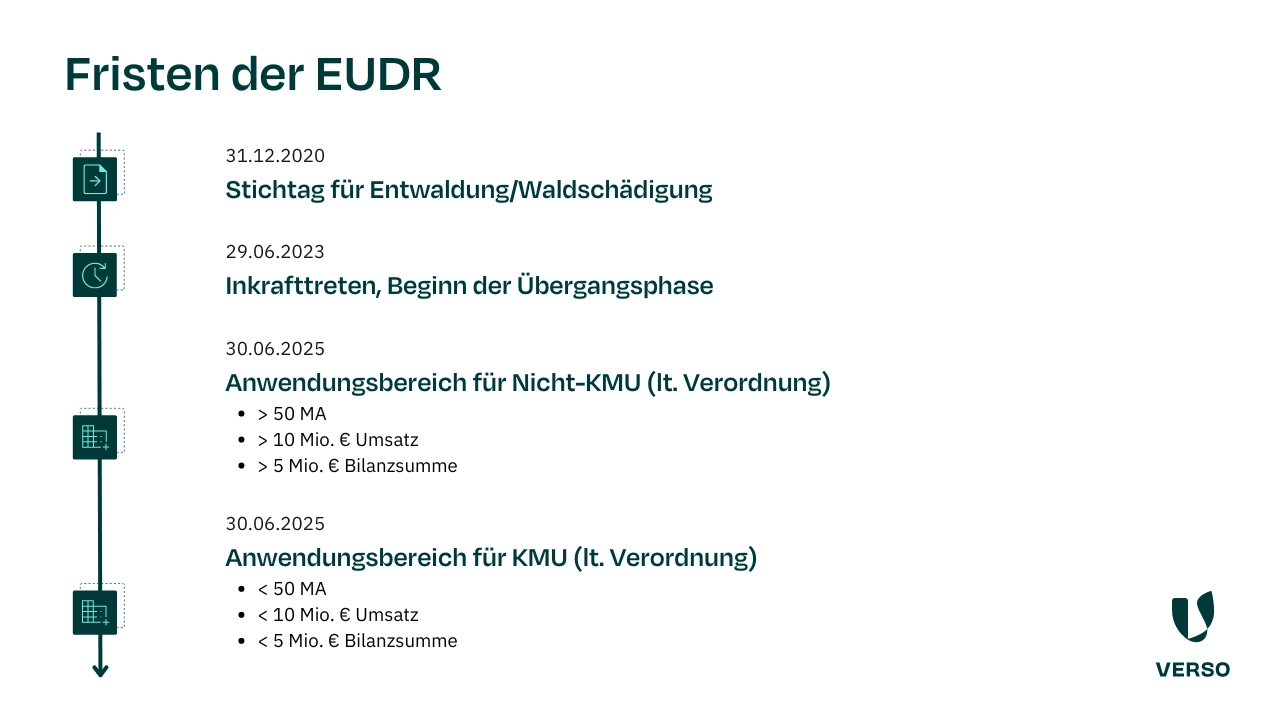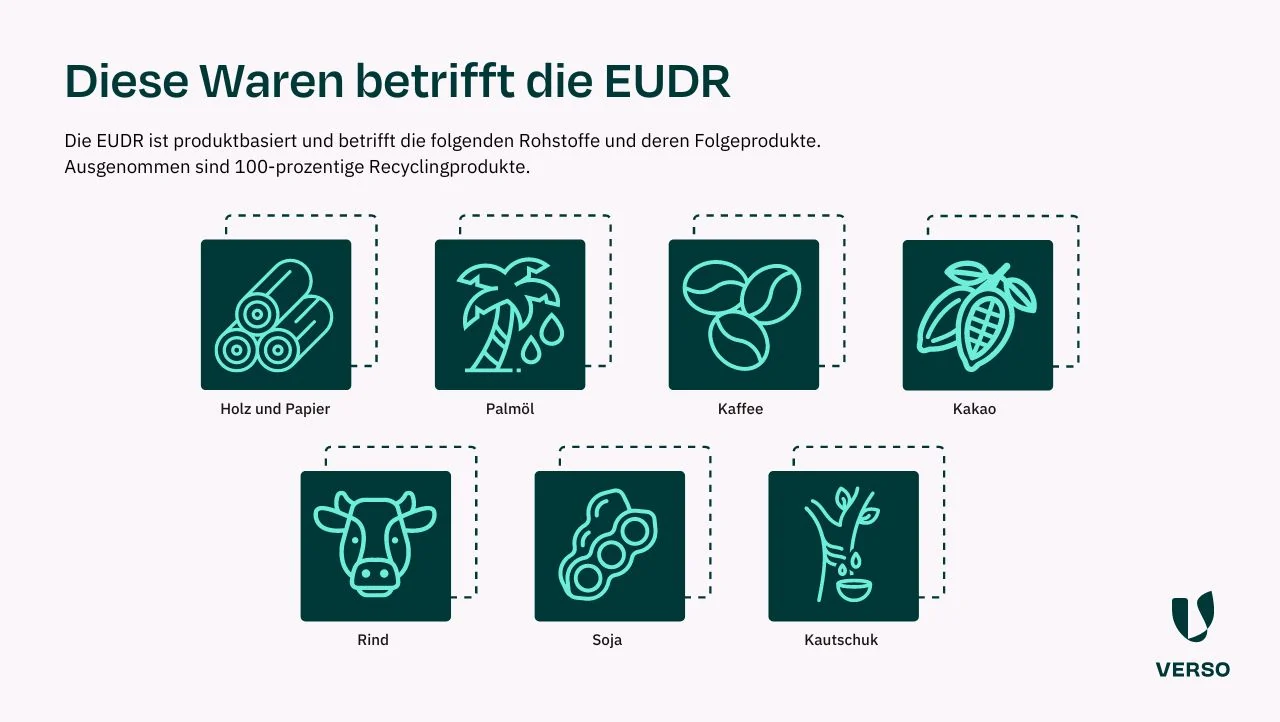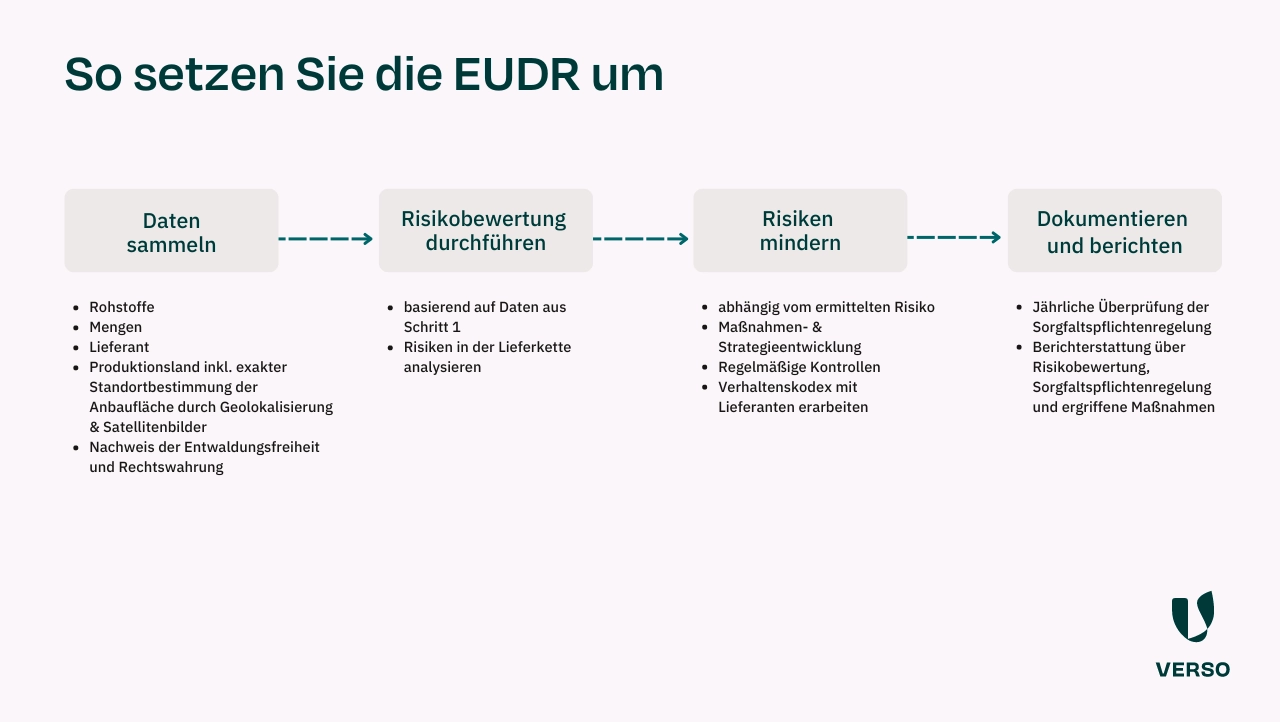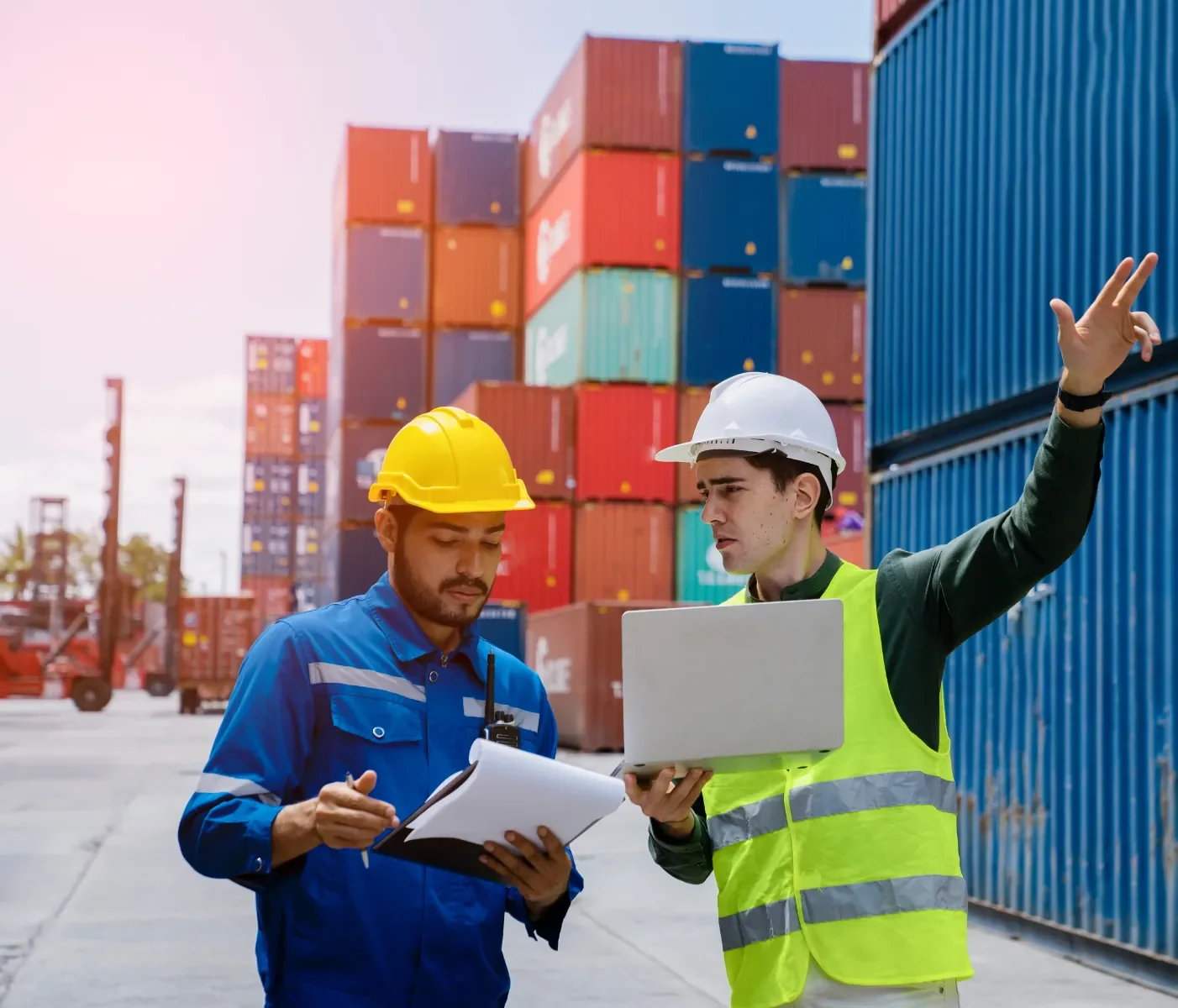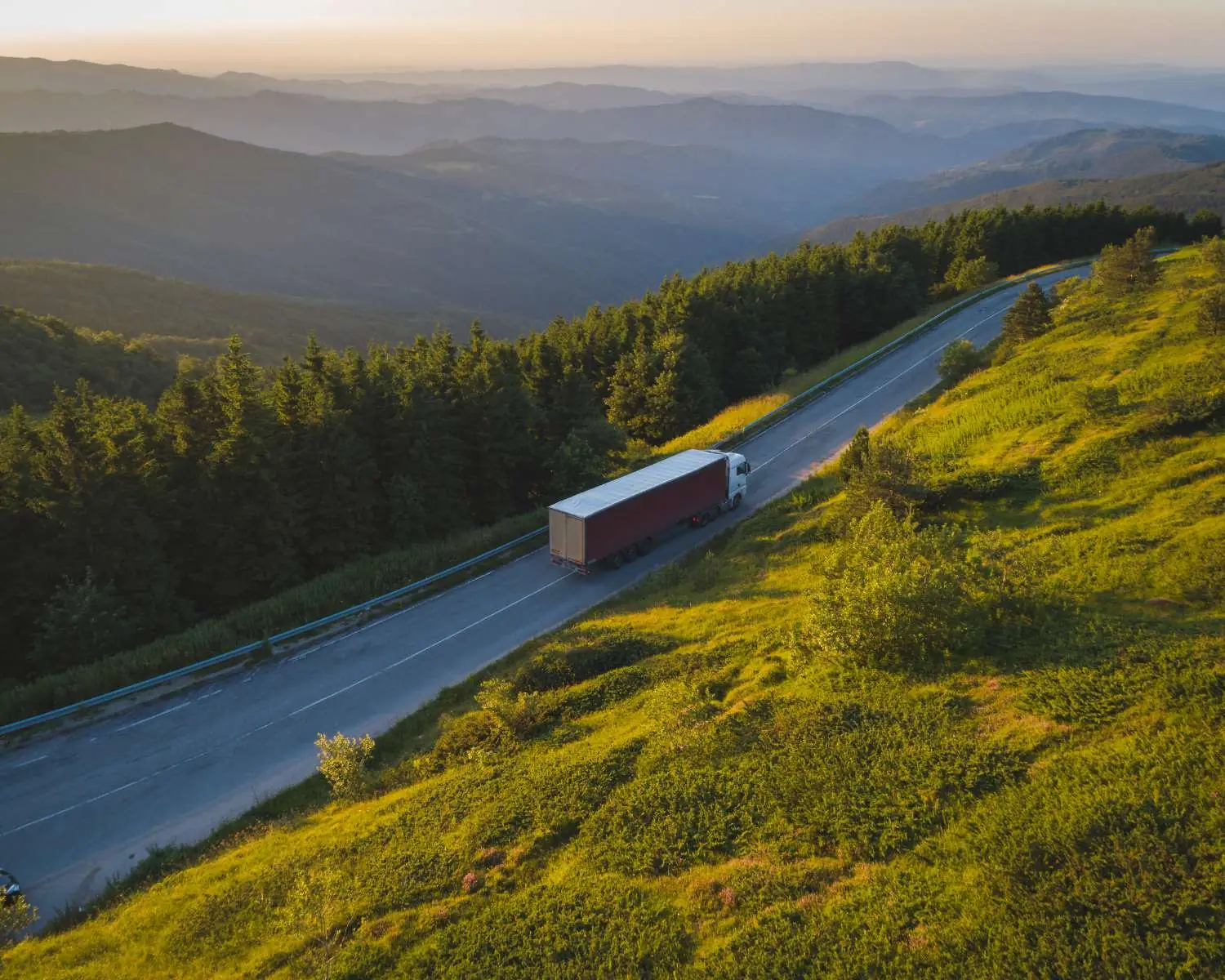
The most important questions and answers on EUDR
The EU regulation for deforestation-free supply chains (EUDR) aims to prevent the ongoing deforestation in order to protect biodiversity and reduce greenhouse gas emissions. In this article, we answer the most important questions about the EUDR.
What is the EUDR?
After the USA, Germany was the world’s largest importer of green coffee in 2019.
In 2018, Germany was also one of the largest importers of raw cocoa and was the European leader in per capita cocoa consumption.
Let’s broaden our view a little.
The EU is the second largest importer of soy, much of which is used as animal feed.
And even if imports are falling in some areas (e.g. tropical timber), one thing is certain: together with other high-income countries such as the USA and China, Europe is one of the world’s largest importers of raw materials and goods that drive global deforestation.
In the last 30 years, we have lost an area of forest worldwide that is larger in total than the European Union.
Forest degradation and deforestation are still progressing at a tremendous rate, which only exacerbates global warming and biodiversity loss.
However, the growth of prosperity and the economy cannot be endlessly expanded at the expense of the environment.
As early as 2013, the EU therefore put an initial stop to deforestation with the EU Timber Regulation (EUTR ) (implemented in Germany by the Timber Trade Security Act (Holzhandels-Sicherungsgesetz – HolzSiG)).
However, the standards and enforcement of the EUTR have been repeatedly criticized as weak.
As part of the Green Deal, the EU is now tightening its measures with the EUDR.
The initial introduction, placing/provision on the EU internal market and export of certain goods for which forests have been cleared or forest ecosystems damaged since the beginning of 2021 will soon be prohibited.
Regardless of whether this forest is located in Thuringia, Romania or Brazil.
When does the EUDR come into force?
The EUDR is set to affect the first companies from 30.12.2024. The scope of application will then be gradually expanded in a similar way to the CSRD and CSDDD. From 30.12.2024: companies that meet at least two of the following criteria (large and medium-sized enterprises – referred to as “non-SMEs” in the EUDR)
- > 50 employees
- > 10 million € turnover
- > 5 million € Balance sheet total
From 30.06.2025: Companies that meet at least two of the following criteria (small and micro enterprises – referred to as “SMEs” in the EUDR):
- < 50 employees
- < 10 million € turnover
- < 5 million € Balance sheet total
Who is affected by the EUDR?
The EUDR is product-based. Any company that trades in products or raw materials that fall within the scope of the EUDR is affected. A distinction is made between affected companies:
- Market participants: companies that import/export relevant products into/out of the Union market for the first time
- Traders: companies that make relevant products available on the Union market
Which products are covered by the EUDR?
The new deforestation regulation affects the following raw materials and products manufactured using these raw materials:
- Wood
- Palm oil
- Coffee
- Cocoa
- Beef
- Soy
- Rubber
The regulation does not provide for any thresholds or volume values. Incidentally, the list of affected raw materials is to be expanded in the future.
What conditions must products fulfill under the EUDR?
Starting with the implementation phase: Import, trade and export of the above-mentioned raw materials and their derived products on the EU internal market are only permitted, if these three conditions are met:
- Deforestation-free:The products were manufactured without converting natural forest into agricultural land or tree plantations after 31.12.2020. This also applies if deforestation was considered legal in the country of origin!
- Production in accordance with the relevant rights of the country of origin: This concerns both environmental protection and human rights. Species protection measures, anti-corruption measures, labor rights, the UN Declaration on the Rights of Indigenous Peoples, trade law, etc. have been complied with.
- Due diligence declaration available:A risk assessment has been carried out for the product, the due diligence obligations have been complied with and there is no or only a negligible risk of deforestation.
Are there any exceptions?
Yes, there are some exceptions to the EUDR:
- 100% recycled goods, i.e. goods made from raw materials/consequential products whose life cycle is already complete anyway
- Packaging materials used solely to support, protect or carry goods
- Operating instructions
- Bamboo products
Products that were produced before the EUDR came into force on 29.06.2023 are also exempt from the EUDR.
However, this does not apply to wood products, as these were previously covered by the EUTR.
What requirements does the EUDR place on my company?
Under the new Deforestation Regulation, companies that are the first to place a raw material or downstream product on the market (“operators”) must carry out a risk assessment, mitigate risks and submit a due diligence declaration via the EU “Traces” system. Traders who trade or process the raw materials or goods downstream on the EU market may then be able to refer to the reference numbers in the due diligence declaration. If the due diligence declaration is missing, the traders must of course provide it themselves. Large traders must also verify the risk assessment on a random basis. The EUDR also introduces a documentation and reporting obligation. As the Deforestation Directive also differentiates between “SMEs” and “non-SMEs” for traders and market participants, there is also a gradation here: implementation is simplified for SMEs (according to the EU Directive) through a narrower list of obligations. Among other things, they have to provide less information about their upstream and downstream supply chain and do not have to submit a public EUDR report. You should therefore check which categories your company falls into and which specific obligations you are subject to.
The requirements of the EUDR – step by step
1. Collect data
Get a precise overview of your goods and raw materials. This includes information such asprecise descriptions, quantities, suppliers and countries of origin. The EUDR also requires the geolocation of all properties on which the raw materials concerned were produced – including the time or period of production. Not only in the future, but also retroactively until 31.12.2020. This is to ensure that no deforestation has actually taken place on the land in question. You should also obtain proof that all rights are protected in the country of origin.
2. Carry out a risk assessment
The aim is to assess the deforestation risk of newly imported products and raw materials. Criteria for risk assessment include the country of origin, the deforestation dynamics in this country, the political/social situation or the complexity of the importing company’s supply chain. The EU provides a benchmarking system that categorizes producer countries according to risk classes. According to the EUDR, only products with no or negligible risk may be traded on the EU internal market.
3. Reduce risks
If you have identified risks in your supply chain, these must now be reduced as far as possible.
Develop a new code of conduct together with your suppliers as well as adaptable strategies and control measures.
Check compliance, e.g. through supplier audits or by requesting additional documentation.
4. Document and report
Furthermore, the EUDR also introduces an internal documentation obligation and a reporting obligation. A due diligence declaration or confirmation of EUDR compliance must be enclosed with each batch of affected goods, which customs will check on a risk basis. With the exception of “SMEs”, all companies are also obliged to publicly report on the risk assessment, due diligence process and measures taken. If your company falls under the EU Sustainability Reporting Directive (CSRD), you can handleEUDR reporting via the CSRD report.
Does the EUDR provide for sanctions?
Yes. Planned sanctions include:
- Skimming off profits unlawfully made as a result of non-compliance with the EUDR
- Fines in proportion to forest damage and value of goods, but at least 4 % of annual turnover
- Confiscation of goods or products
- Temporary import bans
- Exclusion from public funds and public tenders
- Naming and shaming
Read more in our article “Sanctions for errors in ESG reporting and implementation”.
What is the best way to implement the EUDR?
With VERSO. Our Supply Chain Hub offers you a seamless end-to-end process for all EUDR requirements – from risk identification to the creation of your CSRD report in the ESG Hub. Find out more:
* This information is summarized editorial content and should not be construed as legal advice. VERSO accepts no liability.
This might also interest you:
Subscribe to our newsletter!
Sign up and receive regular news about:
- Pragmatic all-in-one solution for ESG reporting, climate and supply chain management
- Best practices in the areas of ESG and sustainable supply chains
- Developed with expertise from 12+ years of sustainability management
- Sustainability events and much more.
